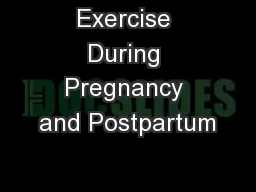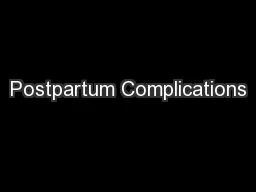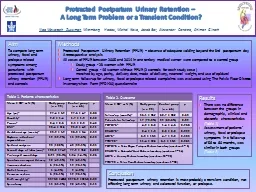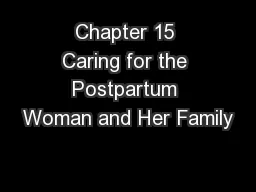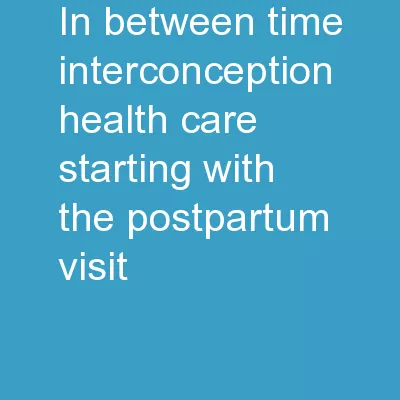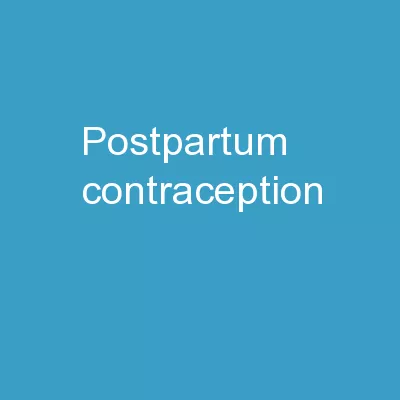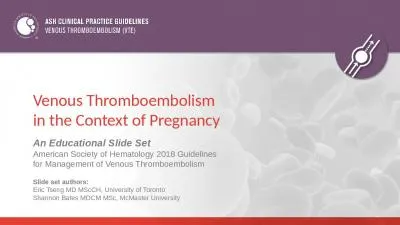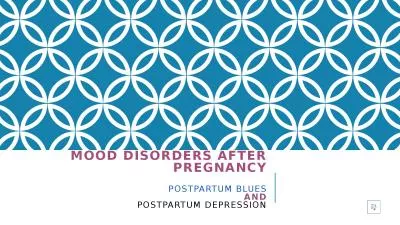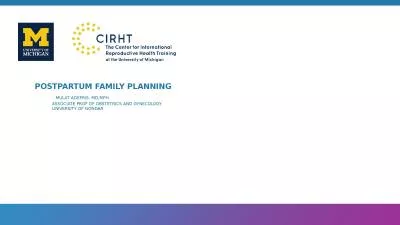PPT-Exercise During Pregnancy and Postpartum
Author : olivia-moreira | Published Date : 2018-09-23
By Erin Moore Physiologic Changes with Pregnancy Softtissue edema reported by approximately 80 of women in the last 8 wks Increased fluid retention predispose
Presentation Embed Code
Download Presentation
Download Presentation The PPT/PDF document "Exercise During Pregnancy and Postpartum" is the property of its rightful owner. Permission is granted to download and print the materials on this website for personal, non-commercial use only, and to display it on your personal computer provided you do not modify the materials and that you retain all copyright notices contained in the materials. By downloading content from our website, you accept the terms of this agreement.
Exercise During Pregnancy and Postpartum: Transcript
By Erin Moore Physiologic Changes with Pregnancy Softtissue edema reported by approximately 80 of women in the last 8 wks Increased fluid retention predispose nerve entrapment carpel tunnel. Charlotte Warren. , . Timothy Abuya,. Ian Askew,. Integra Initiative . Integration for Impact Conference Nairobi 12th- 14. th. September 2012. Integra Initiative . 1. Facility assessments in . clinics. Dr Violet Okech- Helu. Department of Mental Health, KNH. Email:violet.okech@gmail.com. Postpartum Depression: The Facts. Depression is one of the commonest, treatable yet undiagnosed mental health disorders with a HUGE impact on bio-psycho-social functioning.. Perinatal Practicum . Common postpartum complications. Postpartum hemorrhage. Hypertensive disorders. Infection. Venous disorders. Postpartum mood disorders. Amniotic fluid embolism. Postpartum hemorrhage. Felipe A. Medeiros. Assistant Professor. Department of Anesthesiology. The University of Texas medical Branch. March 14. th. , 2016. Overview. Severe bleeding is the single most significant cause of maternal death . –. A . Long Term Problem or a Transient Condition. ?. Noa. . Mevorach. . Zussman. , . Miremberg. . Hadas. , Michal . Kovo. , Jacob Bar, Alexander Condrea, . Shimon . Ginath. Aim. To . compare long term urinary, fecal and prolapse related symptoms . Fourth Trimester. Begins immediately after childbirth. Puerperium. —. first 6 weeks after birth. Close observation. —. identify hemorrhage and complications during first critical hour. Ongoing education and support. PART . 2. : . CARE FOR WOMEN WITH CHRONIC DISEASES AND MATERNAL COMPLICATIONS OF PREGNANCY. MODULE . 5. The National Preconception Curriculum & Resources Guide for Clinicians. MODULE 5. Release Date: April 3, 2017. Anita . L. Nelson, MD. Harbor-UCLA Medical . Center. Contemporary Forums . Conflict of Interest Disclosure. Anita L. Nelson, MD. Grants/. Research. Bayer, Merck, Pfizer, Teva. Honoraria/. Speakers Bureau. An Educational Slide Set . American Society of Hematology 2018 Guidelines . for Management of Venous Thromboembolism. Slide set authors: . Eric Tseng MD . MScCH. , University of Toronto. Shannon Bates MDCM MSc, McMaster University. WOMEN. Project Overview. Principal Investigator: Afshan Hameed, MD, FACOG. UCI Co-Investigators: Heike Thiel de Bocanegra, PhD, MPH. Brian Crosland, MD. UCSD Co-Investigator: Maryam . Tarsa. , MD, MAS. Cardiovascular Disease (CVD) Toolkit. The California Maternal Quality Care Collaborative (CMQCC), a multi-stakeholder organization committed to ending preventable morbidity, mortality and racial disparities in California maternity care developed a CVD screening toolkit for prenatal care and to other providers who encounter obstetric patients. Psychological . Aspects. PRESENTED BY :. GROUP D4 . What we are going to talk about :. Psychological changes during pregnancy and . peurperium. .. Postpartum Depressive illness.. Puerperal psychosis. Postpartum Blues. and. Postpartum Depression. What . are the . Baby Blues ??. I should be happy…. Most new moms experience the baby blues, feelings of sadness and worry, that begin in the first days after childbirth. With the baby blues, a woman might feel happy one minute and tearful or overwhelmed the next. Baby blues usually last only a few days or a week or two.. . Mulat . Adefris. , MD,MPH. Associate prof of Obstetrics and gynecology. University of Gondar. Objectives. Reason for using postpartum family planning.
Download Document
Here is the link to download the presentation.
"Exercise During Pregnancy and Postpartum"The content belongs to its owner. You may download and print it for personal use, without modification, and keep all copyright notices. By downloading, you agree to these terms.
Related Documents

